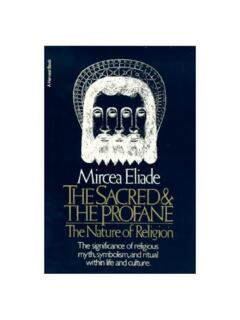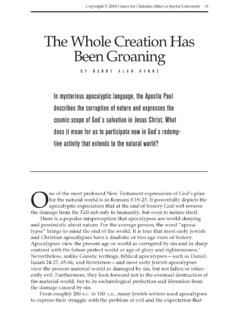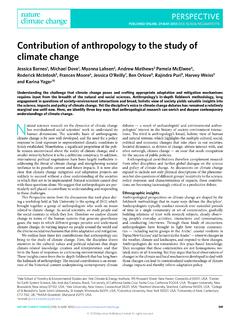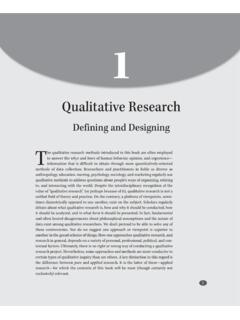Transcription of revealing the african presence in renaissance europe
1 The african presence in renaissance europethe walters art museumrevealing the african presencein renaissance europerevealing the african presencein renaissance europe RevealingThe african presence renaissance europe RevealingThe african presence renaissance Europeedited byJoaneath Spicercontributions byNatalie Zemon DavisKate LoweJoaneath SpicerBen Vinson IIIrevealing the african presencein renaissance europethe walters art museumPublished by the Walters Art Museum, Baltimore 2012 Trustees of the Walters Art Gallery Third printing, 2013 This publication accompanies the exhibition revealing the african presence in renaissance europe , held at the Walters Art Museum from October 14, 2012, to January 21, 2013, and at the Princeton University Art Museum from February 16 to June 9, 2013.
2 This exhibition is supported by a grant from the National Endowment for the Humanities and by an indemnity from the Federal Council on the Arts and of Congress Cataloging-in-Publication DataRevealing the african presence in renaissance europe /edited by Joaneath Spicer ; contributions by Natalie Zemon Davis, Kate Lowe, Joaneath Spicer, Ben Vinson III ; The Walters Art cm. This publication accompanies the exhibition Reveal-ing the african presence in renaissance europe , held at the Walters Art Museum from October 14, 2012, to January 21, 2013, and at the Princeton University Art Museum from February 16 to June 9, 2013.
3 Includes bibliographical 978-0-911886-78-81. Africans in art Exhibitions. 2. Blacks in art Exhibitions. 3. Art, renaissance Exhibitions. 4. Blacks europe History 16th century Exhibitions. I. Spicer, Joaneath A. (Joaneath Ann) II. Davis, Natalie Zemon, 1928 III. Lowe, K. J. P. IV. Vinson, Ben, III. V. Walters Art Museum (Baltimore, Md.) VI. Princeton University. Art Museum. dc23 2012018607 This publication has been generously supported by the Robert H. and Clarice Smith Publication FundAll rights reserved. No part of the contents of this book may be reproduced, stored in a retrieval system, or transmitted in any form or by any means, including photocopy, recording, or other information and retrieval systems without the written permission of the Trustees of the Walters Art dimensions are in centimeters; height precedes width precedes depth unless otherwise Walters Art Museum 600 North Charles Street Baltimore, Maryland 21201 by Marquand Books, Seattle and typeset by Susan E.
4 Kelly Typeset in Eidetic Modern, Eidetic Neo, and Voluta Script Proofread by Carrie Wicks Color management by iocolor, Seattle Printed and bound in China by Artron Color Printing and page 118 Workshop of Gerard David, Adoration of the Kings (no. 1), detail pag e 2 Domenico Tintoretto, Portrait of a Man (no. 65)pag e 6 Girolamo da Santacroce, Adoration of the Kings (no. 24)page 12 Chafariz d el Rey in the Alfama District (no. 47), detailpage 34 Jan Muller, after Hendrick Goltzius, The First Day (Dies 1) (no. 38)page 60 Habits des habitans du Caire, from Leo Africanus, Historiale description de l Afrique (no.)
5 19)page 80 Portrait of a Wealthy african (no. 61)page 98 Andr s S nchez Galque, Los tres mulatos de Esmeraldas (no. 77)Contents IntroductionJoaneath SpicerThe Lives of african Slaves and People of african Descent in renaissance EuropeKate LoweEuropean Perceptions of Blackness as Reflected in the Visual ArtsJoaneath Spicer Leo Africanus Presents Africa to EuropeansNatalie Zemon DavisFree Men and Women of african Ancestry in renaissance EuropeJoaneath SpicerVisual Representations of an Elite: african Ambassadors and Rulers in renaissance EuropeKate LoweAfterwordBen Vinson III81335618199116 List of Lenders 117 Checklist of the Exhibition 119 Selected Secondary Sources 139 Curator s Acknowledgments 142 Contributors 143 Photography Credits 144 Director s Foreword 767director s forewordRevealing the african presence in renaissance europe invites visitors to explore the varied roles and societal contributions of Africans and their descendents in renaissance europe as revealed in compelling paintings, drawings, sculpture.
6 And printed books of the period. The story of the renaissance with its renewed focus on the individ-ual is often told, but this project seeks a different perspective, to understand the period in terms of individuals of african ancestry, whom we encoun-ter in arresting portrayals from life, testifying to the renaissance adage that portraiture magically makes the absent present. We begin with slaves, moving up the social ladder to farmers, artisans, aristocrats, scholars, diplomats, and rulers from different parts of the african continent.
7 While many individuals can be identified, the names of most slaves and freed men and women are lost. Recognizing the traces of their existence in the art of the time and, where possible, their achieve-ments is one way of restoring their identities. The exhibition, conceived by Joaneath Spicer, James A. Murnaghan Curator of renaissance and Baroque Art at the Walters Art Museum, and the programs accompanying it are an expres-sion of the engagement of the Walters, through our collections and programming, with the Afri-can American community in Baltimore to create an increased sense of a shared heritage and of the museum s commitment to serving diverse audiences, to which our second venue, Princeton University Art Museum, subscribes as well.
8 The museum s extensive collection of renaissance art, among the finest in America, contributes sub-stantially to the exhibition s object list, and the exhibition s interpretive approach builds on the approach embedded in the Walters permanent installation of a late renaissance Chamber of Art and Wonders, also conceived by Dr. Spicer, which underscores the cultural exchange among europe , Asia, and Africa in the Age of Exploration. A project of this scope and ambition could not have happened without the generous support of many institutions and individuals, first of all the Princeton University Art Museum.
9 We are deeply grateful to the many donors who made the exhibition possible at the Walters, including the Richard C. von Hess Foundation, the National Endowment for the Arts, the National Endowment for the Humanities, the Bernard Fam-ily, Christie s, Andie and Jack Laporte, Kathryn Coke Rienhoff, Lynn and Philip Rauch, the Mary-land Humanities Council, Cynthia Alderdice, Joel M. Goldfrank, and other generous individuals. This publication is made possible by the Robert H. and Clarice Smith Publication Fund. The exhibi-tion is supported by an indemnity from the Federal Council on the Arts and VikanThe Walters Art Museum introductionjoaneath spicerThe value placed on the identity and perspective of the individual may be one of the chief legacies of the European renaissance to Western culture, but that attention expanded to encompass those outside the cultural elites only very gradually and imperfectly.
10 Given the conventionalized treatment of other mar-ginalized groups of the time such as peasants, the material available for illuminating the lives of indi-vidual Africans in renaissance europe through the visual arts is considerable, though little known to the wider public. The focus here is on Africans liv-ing in or visiting europe in what has been called the long sixteenth century, from the 1480s to around 1610. The exhibition and essays seek to draw out not only their physical presence but their identity and participation in society, as well as the challenges, prejudices, and the opportunities they encountered.





